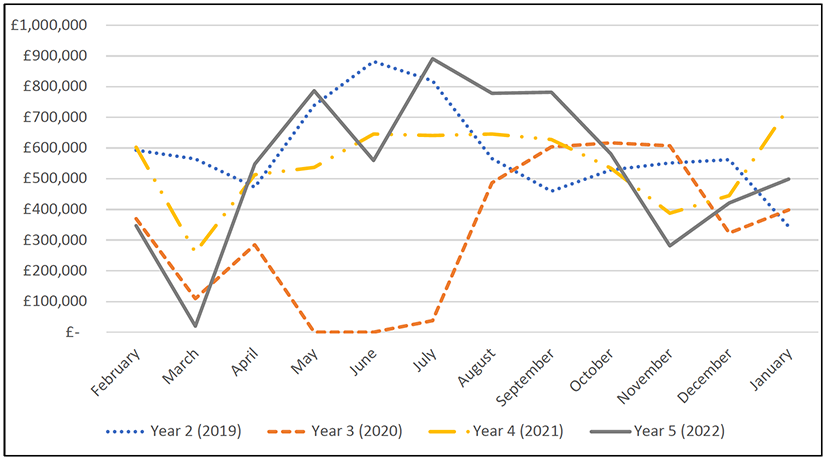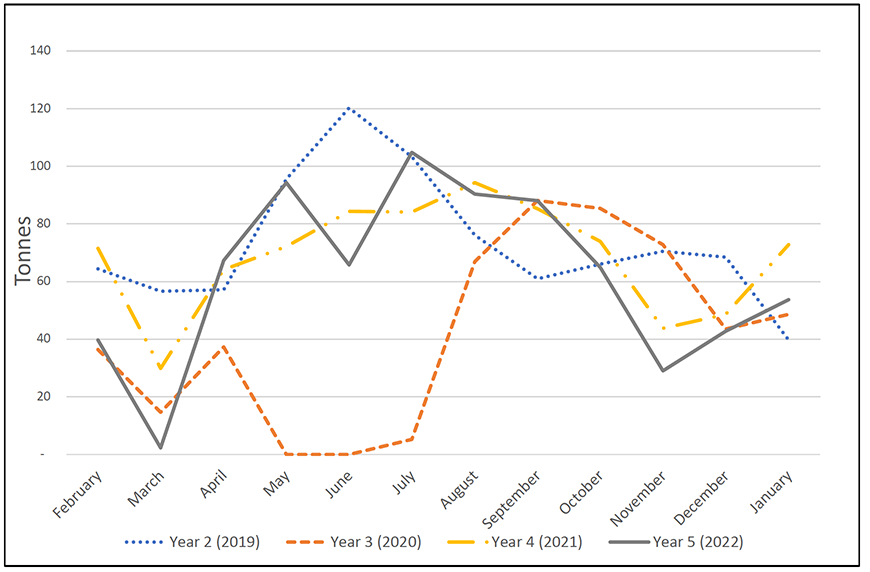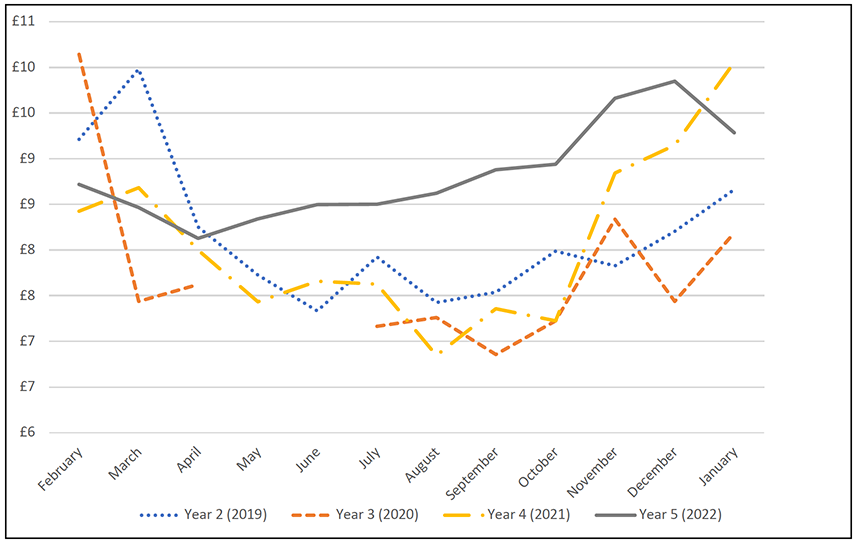Electrofishing for razor clams: scientific trial update - 1 February 2022 to 31 January 2023
A progress update report on the electrofishing for razor clams scientific trial from 1 February 2022 to 31 January 2023.
5. Vessel Activity, Landings and Employment
In the fifth year of the trial, 23 eligible participants were active. It should be noted that not all vessels involved in the electrofishing for razor clam trial are Scottish-registered, and the trial period does not fully match the calendar year. As fisheries data for 2023 is pre-statistical release data which has not been fully quality assured, data for January 2023 (the final month of the 5th trial year) has not been included in this analysis. As a result, the analysis below is based on the calendar year rather than the trial year, with each January of the calendar year ( 1 Jan – 31 Dec) being from the previous year’s trial year (1 Feb – 31 Jan); this is a change from previous published annual reports when the trial year was used for analysis.
Active vessels were estimated to have landed around 743 tonnes of razor clams in 2022, with an estimated landed value of £6.5 million (Figure 1). Compared to the previous year of the trial the landing tonnage and the nominal value of landings decreased by 10% and 1% respectively, predominantly due to a single vessel being removed from the trial from the beginning of the trial year. Landing tonnage was around 15% lower than levels seen in 2019 with the nominal value being 8% lower than levels seen in 2019, which was the previous high point.
The last four years of the trial indicate a pattern of higher spring and summer landings before tailing off in autumn, with some increases around December or January where prices are often highest. As seen in Figures 1 and 2 below, razor clam landings in 2022 saw the spring/summer peak seen in pre-Covid-19 years but had a more muted peak in December.


While prices fluctuate between vessels, buyers, and months there is not a notably large variance in prices, except for a small peak around December/January (Figure 3). The nominal average price per kilogram (kg) achieved by the trial vessels during 2022 was estimated to be around £8.70 per kg. This is 10% higher than the nominal price received in 2021 and is above the nominal prices seen in 2018 pre Covid-19, however, when accounting for inflation these prices remain below the 2018 peak. There is a noticeable increase in prices from June 2022 onwards which matches a period of high inflation across the UK as seen in the ONS CPIH[1]. As such this suggests the price increases are likely to be a response to general rising costs of business rather than mismatches between the available supply and demand.
The highest prices were generally at the end of the trial year, when landings were lower and possibly due to higher demand from the festive new year period.

The trial also supports further economic activity and employment for people in the wider supply chain supporting these vessels in Scotland, and in the transportation of the product to market. The Scottish and English vessels active during the fifth year of the trial provided employment for around 97 people, most of which were regularly employed (regularly employed being those where fishing was their primary occupation).
Contact
There is a problem
Thanks for your feedback